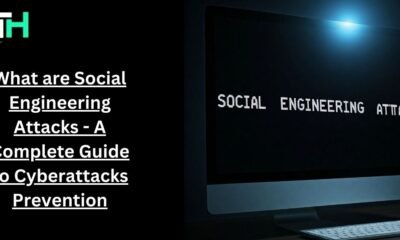Tech Startups
The Evolution of Animation: From Hand-Drawn to Digital

Animation has undergone a transformative journey, evolving from simple hand-drawn sketches to sophisticated digital creations that captivate audiences around the world. This evolution not only changed the way stories are told but also revolutionized various industries, from cinema to video games and advertising. In this blog post, we’ll explore the history of animation, the advent of digital techniques, and the rise of 2D and 3D animation services, highlighting the importance of animation studios in Dallas and the impact of the different gaming categories: indie vs AA vs AAA games.
The Birth of Animation: Hand-Drawn Beginnings
The roots of animation trace back to the late 19th century, with pioneers like Émile Reynaud, who created the first animated film projections. These early works, however, were hand-drawn frame by frame, a painstaking process requiring immense artistic skill and patience. One of the first major milestones in animation was the creation of Gertie the Dinosaur (1914) by Winsor McCay, which showed the potential for animation to create lifelike movements.
As animation evolved, filmmakers began creating feature-length films using hand-drawn techniques. Disney’s Snow White and the Seven Dwarfs (1937) marked a pivotal moment in animation history, becoming the first full-length animated film. The success of such films helped establish animation as a major force in the entertainment industry, setting the stage for future innovations.
The Transition to Digital: A Game-Changer for Animation
While hand-drawn animation was incredibly labor-intensive, the rise of digital technology in the late 20th century ushered in a new era for the medium. The development of computer-generated imagery (CGI) allowed animators to create more complex, detailed, and dynamic visuals without the need for endless hand-drawn frames. This marked the beginning of the shift from traditional animation to digital techniques.
Digital animation became popular with the release of Toy Story in 1995, the first full-length feature film entirely created using 3D animation services. The breakthrough success of Pixar’s Toy Story demonstrated the enormous potential of 3D animation, marking a significant departure from 2D animation techniques.
The Rise of 2D and 3D Animation Services
As the digital age progressed, two distinct paths for animation emerged: 2D and 3D animation. Each offers unique benefits and aesthetic qualities, but both have become central to the animation landscape.
2D Animation Services
2D animation refers to the process of creating movement in a two-dimensional artistic space. The art form remained dominant for much of the 20th century, but with the digital revolution, it transitioned into the world of digital tools and software. Today, 2D animation services are essential for a wide range of applications, including TV shows, advertisements, educational content, and mobile apps.
The beauty of 2D animation lies in its ability to convey emotions and stories through simplicity and stylized designs. Iconic animated series such as The Simpsons or Avatar: The Last Airbender demonstrate the power of 2D animation in creating engaging narratives and immersive worlds.
While 2D animation is often associated with traditional, hand-drawn techniques, modern 2D animation services use software like Adobe Animate, Toon Boom, and TVPaint to streamline the animation process. These tools allow for greater flexibility, precision, and efficiency while maintaining the charm and expressiveness of the traditional 2D style.
3D Animation Services
In contrast to 2D animation, 3D animation services create characters, environments, and objects in a three-dimensional space, allowing for greater depth, realism, and visual complexity. 3D animation is used extensively in feature films, television, video games, and virtual reality experiences.
The rise of 3D animation began in earnest with the success of Toy Story, followed by Shrek (2001), which further pushed the boundaries of what was possible in CGI. Today, 3D animation has become the standard in Hollywood blockbusters, with studios like Pixar, DreamWorks, and Industrial Light & Magic creating incredibly lifelike and imaginative animated films.
Moreover, 3D animation services have played a pivotal role in the development of virtual worlds and simulations, ranging from architectural visualizations to interactive video games. 3D animation also allows for more dynamic action scenes, realistic lighting, and intricate visual effects, which has made it the go-to choice for high-budget films and productions.
The Role of Animation Studios in Dallas
Dallas has emerged as a hub for both 2D and 3D animation, thanks to a growing community of skilled animators, studios, and creative professionals. Animation studios in Dallas are at the forefront of innovation, offering services for a wide array of industries, from entertainment to marketing and corporate communications.
These studios provide cutting-edge animation services, using both 2D and 3D techniques to meet the specific needs of their clients. Whether it’s creating explainer videos for businesses, character animation for gaming, or immersive 3D experiences for virtual reality, Dallas-based studios have become instrumental in producing high-quality animated content.
The rise of animation studios in Dallas has also contributed to the broader expansion of the gaming industry, with studios focusing on everything from character design to full 3D environments and gameplay animation.
Animation in the Gaming Industry: Indie vs AA vs AAA Games
The gaming industry has seen immense growth over the past few decades, and animation plays a crucial role in creating engaging and immersive experiences. Within the world of video games, different tiers of development have emerged, each with its own approach to animation.
Indie Games
Indie games, created by small independent teams or individuals, often have limited budgets and resources. As a result, animation in indie games tends to be simpler and more stylized, focusing on unique art directions that don’t require high-end graphics or complex 3D models. Indie developers often use 2D animation services to create charming, hand-drawn visuals that appeal to niche audiences.
The popularity of indie games has exploded in recent years, with titles like Celeste, Hollow Knight, and Undertale winning critical acclaim for their distinctive art styles and captivating stories. These games demonstrate how animation, even in its simplest form, can elevate the gaming experience and make it memorable.
AA Games
AA games occupy the middle ground between indie and AAA games. These titles are often developed by mid-sized studios with larger budgets than indie games but without the vast resources of AAA developers. Animation in AA games typically features a blend of 2D and 3D elements, allowing developers to create more intricate designs while still maintaining a relatively modest production budget.
AA games can showcase detailed environments, fluid character animations, and engaging cinematic sequences, using 3D animation services to bring their worlds to life. Titles like Hellblade: Senua’s Sacrifice and A Plague Tale: Innocence are examples of how AA studios can produce stunning animation that rivals larger titles.
AAA Games
AAA games represent the pinnacle of gaming development, often produced by major studios with massive budgets and teams of animators, designers, and programmers. These games feature highly detailed 3D environments, lifelike character animations, and cutting-edge visual effects that push the boundaries of what is possible in real-time gaming.
In AAA games, animation is used not only for character movements and facial expressions but also for creating realistic environments, weather systems, and dynamic lighting effects. Games like The Last of Us Part II, Red Dead Redemption 2, and Cyberpunk 2077 set new standards for animation quality in gaming, blurring the lines between virtual worlds and reality.
Animation studios that specialize in 3D animation services are often called upon to create these high-quality assets, using advanced motion capture techniques, photorealistic rendering, and complex simulation systems to deliver the immersive experiences gamers expect from AAA titles.
The Future of Animation: Embracing New Technologies
As technology continues to advance, the future of animation looks brighter than ever. The integration of virtual reality (VR), augmented reality (AR), and artificial intelligence (AI) is already reshaping the animation landscape. Studios are exploring ways to incorporate these technologies into their animation pipelines, allowing for even more interactive and immersive experiences.
In the world of video games, the line between indie, AA, and AAA is becoming increasingly blurred. Independent developers now have access to powerful game engines like Unreal Engine and Unity, which allow them to create high-quality 3D animations and visuals that were once only achievable by large studios. This democratization of animation tools is enabling more creators to experiment and innovate in ways that were once impossible.
Conclusion
The evolution of animation from hand-drawn techniques to digital processes has transformed the way stories are told and experienced. Whether through 2D animation services or cutting-edge 3D animation, the medium continues to evolve, offering new opportunities for creators in various industries. Animation studios in Dallas play a key role in this evolution, pushing the boundaries of what’s possible in both entertainment and gaming. As the gaming industry continues to expand, the distinctions between indie, AA, and AAA games will likely continue to blur, but one thing is certain: animation will remain at the heart of the storytelling process.
From the early days of hand-drawn animation to the rise of digital tools, animation has come a long way, and its future is more exciting than ever. With the growth of 2D and 3D animation services and the innovation of game development, animation is set to continue its legacy as a dynamic and integral part of our visual culture.

-

 Phishing attack7 months ago
Phishing attack7 months agoWhat is Spear Phishing and How You Can Identify This Scam?
-

 Social engineering attack8 months ago
Social engineering attack8 months agoBaiting Attacks Explained: A Closer Look at Cyber Threat Tactics
-

 Social engineering attack6 months ago
Social engineering attack6 months agoWhat are Social Engineering Attacks – A Complete Guide to Cyberattacks Prevention
-

 Social engineering attack8 months ago
Social engineering attack8 months agoSpear Phishing Attack: A Targeted Cyber Threat
-

 Social engineering attack8 months ago
Social engineering attack8 months agoWhat is spear phishing attack? A detailed guide
-

 Phishing attack6 months ago
Phishing attack6 months agoWhat Are Phishing Emails? A guide for you
-

 Social engineering attack8 months ago
Social engineering attack8 months agoWhat is spear phishing in cyber security?
-

 Social engineering attack8 months ago
Social engineering attack8 months agoSpear phishing vs phishing: Understand the Risks



















